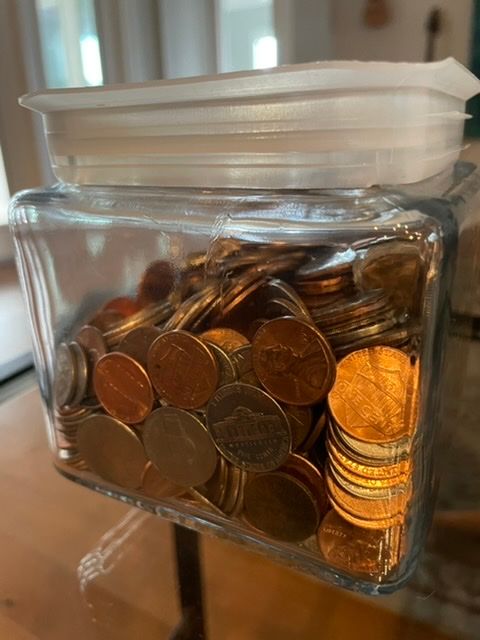Pennies for Nothing and No they Ain’t Free

Paying cash was once the norm. What was once common has now, at least for me, become an awkward transaction. For many of us, paying with cash has become an uncommon occurrence. I still carry some, but where I used to know exactly how much I had, now I usually have no idea.
My experience started when I handed a twenty to the clerk, who needed the help of the computerized cash register to know how much change to give. Working at a variety store in high school I learned how to figure the change in my head and count it back to the customer. The feat is not critical to man’s existence, but is just another thing that’s been lost to technology.
With the purchase came the unintended consequence of what to do with the change. The bills were placed back in my money clip, but I was left with a handful of—coins. Once upon a time, pennies, nickels, dimes, and quarters meant something. I’m dating myself again, but I remember digging through the ashtray in my parents 1970s era station wagon for enough change to buy a few gallons of gas (if memory serves it was .35 a gallon then).
What once had some value now holds none. A single piece of bubble gum was the last holdout of what used to cost a penny. With that gone, it brings the question of why do we still have them. At a pretty young age I started relegating pennies to a “penny jar” which soon became a “coin jar”.
Standing at the counter I found myself in the worst case scenario for weighting myself down with several quarters, a dime, a nickel, and four pennies. The bulk, and worthlessness of it had me staring at the coins in my hand wondering what to do with them. I took the path of least resistance and stuffed them into the donation box beside the register.
The experience led me to think about what we are doing hanging onto relics of the past. Coins are made of metal, whose price is a commodity which made me wonder if you could buy a penny with a penny.
The answer is no. The last data I found was 2019, when a penny cost twice its face value and a nickel fifty percent more than it’s worth to produce. The combined cost or loss to the US Treasury in a year is over $100,000,000 for two worthless coins. They “make” the loss back up on the dime (3.9 cents, quarters .09 cents, and paper money .09 to .15 cents), but why take the loss at all.
It appears that Washington D.C. is aware of the problem. The Currency Evolution Now To Save [CENTS]—Sometimes you have to work really hard to get a good acronym—would allow the U.S. Mint to change the metallic composition of all American coins, which would bring costs down, but our elected officials can’t even agree on that, let alone abandoning at least the penny.
The only downside of the removing the penny from circulation is that you can’t “pitch pennies” which with inflation would be pitching quarters now anyway. Beside having to change a bazillion prices what’s the downside?
